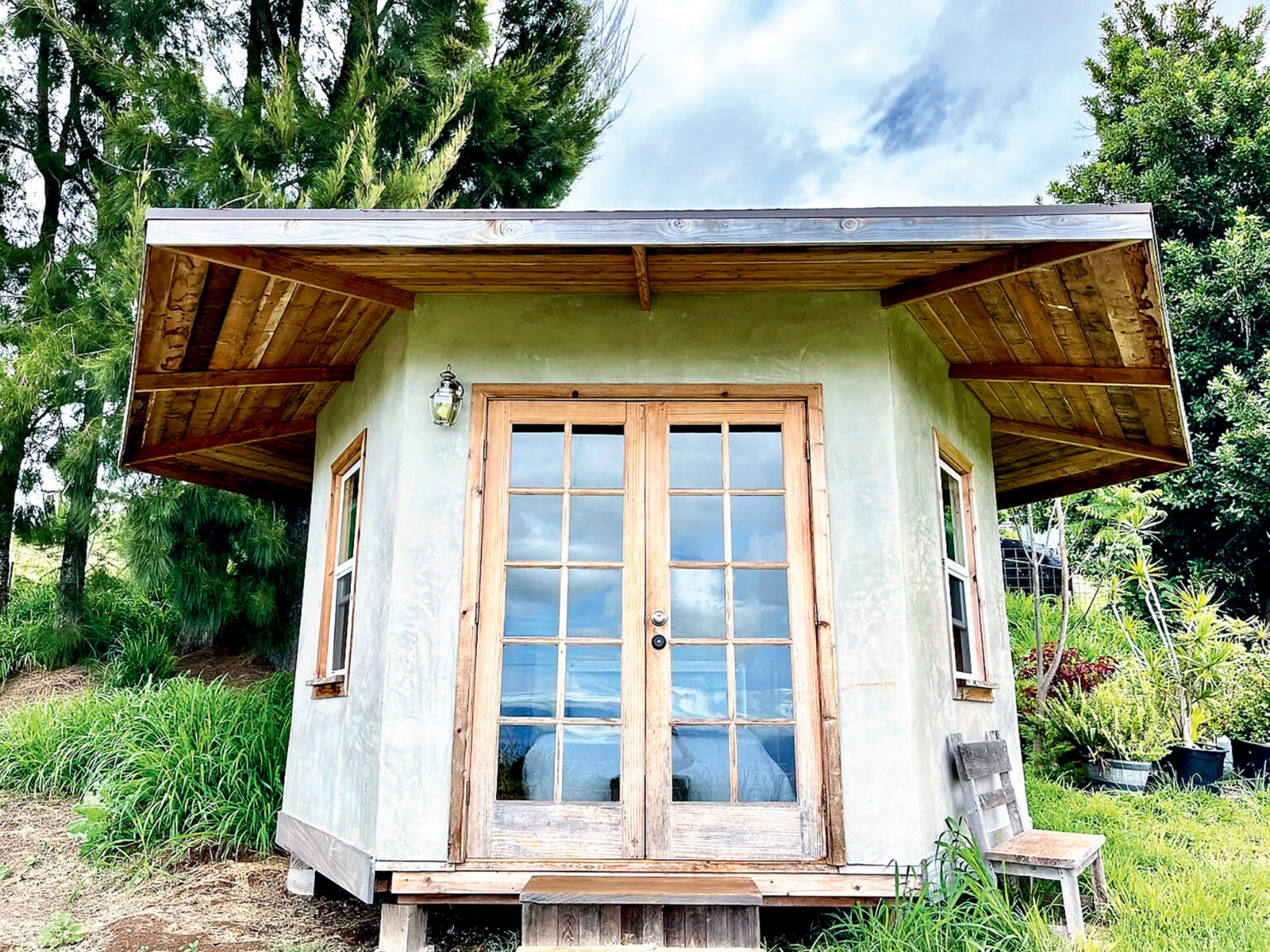With the development of concrete production processes that cut carbon emissions by nearly 90 percent, some engineers are taking things one step further and creating concrete out of organic material.
A Maui-based company adopted the idea and turned it into Hemp Home Hawaii LLC, a general contracting business that specializes in residential construction using hempcrete.
MIXING IT UP
Hempcrete is made of hemp plant stems, pozzolans, hydrated lime and water, and is applied by pouring into molds until it cures.
“It’s really the opposite of concrete,” Joe Smith, Hemp Home Hawaii co-founder and builder, explains. “Concrete uses so much CO2; hempcrete pulls CO2 out of the air. So what these pozzolans do is they … give cementitious properties that will help it harden better and help it cure faster, but also maintain its organic material.”
The specific strain Hemp Home Hawaii uses for hempcrete is called Yuma, known for its thick stems and ability to sprout quickly. Hemp Home Hawaii currently imports all its hemp from the mainland U.S. or Canada because it does not naturally thrive locally.
However, the Hawaii Hemp Task Force, a group of consultants and farmers, recently put together a proposal for the Hawaiʻi state legislature to authorize licenses to grow hemp locally. The University of Hawaiʻi at Mānoa has done testing, but hasn’t yet determined what strain of Yuma would best adapt to a tropical climate.
So far, Hemp Home Hawaii has built two major projects using hempcrete: a 1,250-square-foot, three-bedroom house on a slope near Haleakalā and a 120-square-foot tiny hale in Kula.
“It’s mold-proof; it’s termite-proof; it’s fire-resistant up to 850 degrees,” says Smith. “Its main function is as an insulator, so it really keeps the house cool. And because it’s vapor-permeable, it transmits the heat and humidity in a different way — it kind of takes in and stores it [then] releases it.”
Smith currently stores his 20,000-pound hemp inventory in a 40-foot container on private property, as well as a 20-foot container of hydrated lime.
BACK TO NATURE
Smith says his long career as a general contractor showed him the “sea of toxins” most people live in, motivating him to find an organic alternative for both building and waste materials.
“This is 100 percent organic,” Smith adds. “They say these houses will last 200 years.”
The production of hempcrete leaves little to no waste. Yuma stems are separated from leaves, which are then harvested to make textiles, food and toiletries.
Pacific Biodiesel, a local company that made a name for itself by producing biofuel out of sunflower seeds, now cultivates hemp to make diesel fuel, according to Smith.
“The hope here is that one day, they can grow it for the seeds for diesel fuel, and then we can take the stock and chop it up and use it for building,” he says. “I think they’re doing their test crop right now … and I think they’re doing 100 acres; but ultimately they’re going to do 1,000.”
Looking ahead, Hemp Home Hawaii is now focused on getting permits approved for building in Lāhainā. According to Smith, they had plans drawn up and submitted to Maui County in early September.




